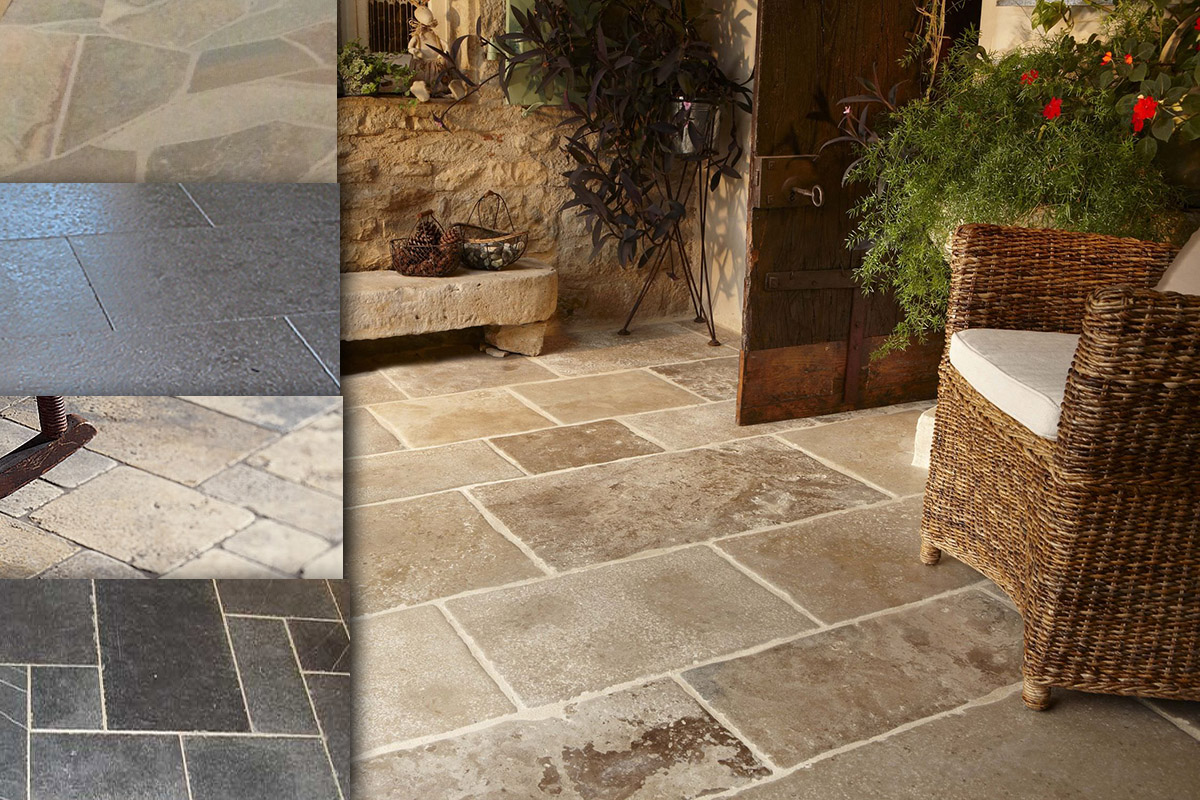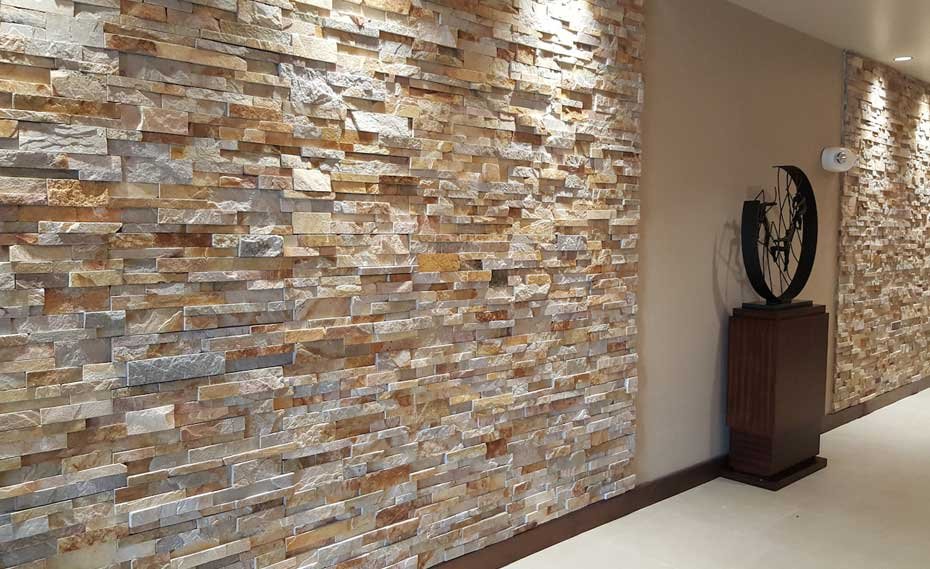NATURAL STONE,
NATURAL STONE FLOORING,
NATURAL STONE TILES,
NATURAL STONE TILES MANUFACTURER,
NATURAL STONE TILES SUPPLIER,
BY BHANDARI MARBLE GROUP
Tile Flooring
Natural Slate Floor Tile Slate flooring tile is a type of natural stone that is quarried from the side of mountains or taken from the earth. A finely grained, homogeneous, metamorphic rock, it is named for the way the material forms in plains, like sheets resting one atop the other, compressed under great pressure to create a powerful bond. While slate is one of many natural stone flooring tiles available, there are also numerous different types of slate, each with their own look and characteristics.

Manufacturing Process
The raw stone used to produce slate floor tile can be found in mountains around the world, with productive quarries in Europe, Asia, and across America. The region that the material is sourced from will determine the constituent chemicals present during the formation of the stone, which will, in turn, affect the look and characteristics of the slate in its finished state. Foreign materials, while exotic, are often more expensive due to the fuel costs to transport heavy tiles. Slate is generally sliced from the earth in the form of rough, massive slabs. These slabs are then cut down into smaller, more manageable slabs and tiles. These pieces are often gauged, a process which evens out the back to make them easier to install. The surface of the slate can also be further refined or left in its natural state. Slabs are generally used as countertops, with smaller thinner tiles of varying sizes used for flooring.

Ecological Concerns
While stone is a natural product, it is also very heavy, so the fuel expended to get it from a far-off location to a job site may have an impact on the environment. Irresponsible mining techniques in countries with fewer regulations can also lead to unsafe working conditions, and physical damage done to the land itself if the slate is removed in too aggressive a manner.

Flooring Options
Gauged/ungauged: At the time it is extracted, the slate is a rough, broken material like you would expect from any rock you find on the ground. When refined into tiles, natural stone generally goes through a process where the material is gauged, which refers to flattening the back in order to help the tileset into the mortar during installation. If the back is not flattened then both sides will be rough and bumpy. Known as ungauged slate, these materials are usually reserved for outdoor applications where they can be sunk into the ground for stepping stones.

Crafted: After being sliced into tiles slate is still naturally going to be bumpy and broken. In many cases, this is desirable, as it makes the material feel more rugged and earthy. When the surface is left un-refined it is called cleft, although the term “natural” is also often used to refer to it looking more like it would in its untouched mountain born state. Crafted slate has great traction, even when wet, but if the ridges are too extreme it can be uncomfortable to walk on barefoot.

Honed: In some cases, slate tiles will be polished to the point where they have perfectly smooth surfaces. This process dulls both the dimensionality and the colors in the stone, though the material does retain the same basic hues. When you touch the face of a honed piece of slate, you will feel that it still has some traction, though less than crafted floors will. Another effect of honing is that tiles will be more likely to show stains, and will be easier to scratch.

Polished: This is a process where the tile is refined to the point that it actually glistens like marble. Very few slates have the textural temperament to achieve a polished finish, and those that do are easy to scratch and damage. However, the look can be simulated with honed tiles, through the application of multiple coats of seal and finish. Some special wax treatments can also be used to achieve the necessary glowing appearance.

Solid: These tiles are predominantly one color all the way through. The consistency of hue, and tone, across a single tile and across tile lots can vary to differing degrees in different types of slate. Floors made from solid-colored stone materials tend to be more formal and subdued. However the unity of appearance does make it easier to see dirt, and small stains or scratches will be more visible.
Multicolor: Many slates will have multiple colors within their surface. These can be matched hues, or they can be wildly contrasting, depending on the type of material. When dealing with multicolored stones you don’t get the uniformity of solid color pieces, but the floors tend to be more eye-catching and exciting.
Different sized and asymmetrically arranged tiles on the floor
Slate flooring tile is a type of natural stone that is quarried from the side of mountains or taken from the earth. A finely grained, homogeneous, metamorphic rock, it is named for the way the material forms in plains, like sheets resting one atop the other, compressed under great pressure to create a powerful bond. While slate is one of many natural stone flooring tiles available, there are also numerous different types of slate, each with their own look and characteristics.

THANKS, AND REGARDS BY D.C. BHANDARI
+91-9829040013
+91-9672941111

